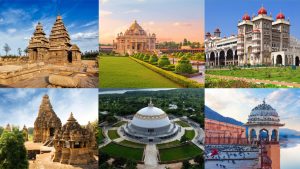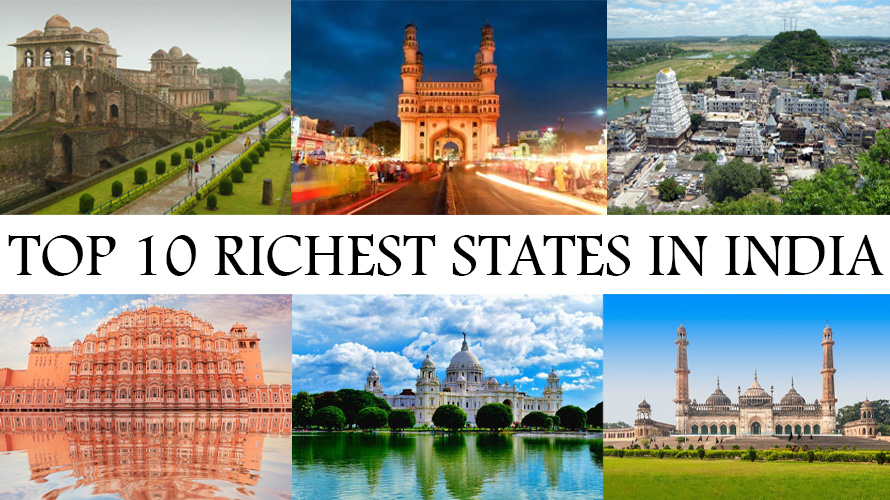As we all know, India is a nation with many different cultures and languages. This makes for a complex population. There is also some richest state in India.
Which is the Richest State in India?
The answer to this question has more than one answer because there are many factors that help determine the wealth of a state. However, two well-known factors in determining how wealthy a State is are GSDP (Gross State Domestic Product) per capita and the total number of people supporting it.
Based on these two factors, according to information gathered in 2021-2022, the state with the highest GSDP per capita is Maharashtra, GSDP of $366.67 Billion.
Here’s the complete list of the richest state
-
Maharashtra, GSDP $366.67 Billion
In charting the richest states in India, Maharashtra comes in at number one with a GSDP just short of $366.67 billion. This is interesting because this state is actually not even in the top three most populous states by population. Maharashtra is an important industrial state and most of its industries are involved in mass media, international trade, and manufacturing. The most important state by area in Maharashtra and it is home to some of India’s biggest companies like Larsen & Toubro Limited and Tata Group. Maharashtra’s 51% agriculture, 9% industrial sector, and 40% service sector contribute to its GSDP.
-
Tamil Nadu, GSDP $265.49 Billion
Tamil Nadu is the second richest state in India, with a GSDP of $265.49 billion. And it has the first economy in India that is not much driven by agriculture. And that makes a lot of sense, given Tamil Nadu’s proximity to both the Indian Ocean and the Bay of Bengal. The GSDP in Tamil Nadu is driven mostly by the manufacturing sector and service sector. Within this sector, some of the most important industries are automobiles, auto components, clothing, textiles, pharmaceuticals, engineering, chemicals, and leather products. Tamil Nadu’s 13% agriculture, 34% industrial sector, and 53% service sector contribute to its GSDP.
-
Gujarat, GSDP $259.25 Billion
One of the richest states in India is Gujarat, which boasts an agrarian economy, a strong manufacturing sector, and diamond industry. In addition to this, it hosts one of the largest ports in India – Jal Marg Vikas – which services vessels traveling towards Mormugao Port. Gujarat’s 19% agriculture, 45% industrial sector, and 36% service sector contribute to its GSDP.
-
Karnataka, GSDP $247.38 Billion
Karnataka is one of India’s IT hubs, and it houses the world’s fourth-largest telecom company in the country. The state has a diverse range of sectors that contribute to its economy, and the largest contributors include engineering, biotechnology, agriculture, information technology, aerospace, clothing textiles, and food processing. Karnataka’s 10% agriculture, 26% industrial sector, and 64% service sector contribute to its GSDP.
-
Uttar Pradesh, GSDP $234.96 Billion
In Uttar Pradesh, the economy largely depends on agriculture and industrial products. Uttar Pradesh is one of the largest producers of food grains in the world, and some of the food grains produced include lentils, rice, maize, wheat, gram, peal, and millet. This is the most populous state in India as it is home to more than 200 million people. Uttar Pradesh’s economy largely depends on agriculture and industrial products. Uttar Pradesh’s 24% agriculture, 26% industrial sector, and 50% service sector contribute to its GSDP.
-
West Bengal, GSDP $206.64 Billion
West Bengal is one of the wealthiest states in India. Since West Bengal falls on India’s eastern border, its economy is defined by trade with neighboring countries. Agricultural products such as rice and tea are plentiful; fish from the Bay of Bengal also contribute to West Bengal’s economy. The state’s capital, Kolkata (a.k.a. Calcutta), is a major economic hub with a gross domestic product (GDP) of $150.1 billion, which makes it one of the richest cities in India. Major industries include textiles and jute processing, heavy engineering, iron/steel/aluminum production, coal mining, and cement manufacturing. West Bengal’s 21% agriculture, 26% industrial sector, and 53% service sector contribute to its GSDP.

-
Rajasthan, GSDP $161.37 Billion
The largest and one of the richest states in India is Rajasthan. The state covers an area of an estimated 131,772 square kilometers, which makes it the largest in terms of area and third-largest by geographical size (after Jammu and Kashmir and Himachal Pradesh). Rajasthan has 9 agro-climatic zones, which helps to grow a diverse range of products. The state also produces some of the most colorful minerals on Earth. Rajasthan’s 44% agriculture, 8% industrial sector, and 47% service sector contribute to its GSDP.
-
Telangana, GSDP $157.35 Billion
Telangana is India’s one of the wealthiest states in terms of gross state domestic product (GSDP). The state also has one of the lowest levels of poverty. The literacy rate in the state is 87%. The most populous city in Telangana is Hyderabad with 4.5 million people living there, followed by Warangal with 1.4 million. The state has a large concentration of Information Technology companies in Hyderabad and Warangal. Industries include aerospace, defense, communications, healthcare, and biotechnology. Telangana’s 55% agriculture, 17% industrial sector, and 26% service sector contribute to its GSDP. The state has an agricultural sector that was previously dependent on the monsoon rains to provide water to crops. However, this sector is highly inefficient and suffers from poor productivity, especially in rainfall-deficient years. This sector also includes a wide range of irrigation projects that are used to improve the quality and quantity of groundwater for irrigation purposes.
-
Andhra Pradesh, GSDP $138.19 Billion
The state of Andhra Pradesh is one of the richest in India. Although its economy relies on tourism, it also does well in agriculture and the service sector. Agriculture is important for Andhra Pradesh because it produces 70% of the shrimp in India, despite being landlocked. The service sector is its most notable portion. Tourism also contributes to a strong economy for the state and has been increasing steadily. Andhra Pradesh’s 55% agriculture, 10% industrial sector, and 35% service sector contribute to its GSDP.
-
Madhya Pradesh, GSDP $126.40 Billion
One of the richest states in India is Madhya Pradesh. With a gross state domestic product (GSDP) of $126.40 billion. As the premier central region for most mineral resources, its economy benefits from natural gas and crude oil production, coal mining and transportation as well as commercial fishing and honey production sectors. Madhya Pradesh is known for its high service sector comprising information technology (IT), software, telecommunications, automobiles, and metals.
The third-largest state in India by area and fourth-largest by population, Madhya Pradesh is also the largest producer of opium in India. Madhya Pradesh’s 62% agriculture, 5% industrial sector, and 37% service sector contribute to its GSDP.
-
Kerala, GSDP $119.93 Billion
Kerala is one of the richest states in India with a GSDP of $120 billion dollars. It has 7.2% of the country’s population and that means it could really benefit from being able to invest in education, health care, and other areas to spur local development there
Kerala is well known for its beautiful backwaters, beaches, and mountains that are found along the coast of India. It is also one of the few states where Hindus make up a majority at 80%. Kerala’s 8% agriculture, 28% industrial sector, and 63% service sector contribute to its GSDP.
-
Delhi, GSDP $108.33 Billion
Delhi is one of the richest states in India by gross domestic product. GSDP of Delhi is $108.33 Billion. Delhi has a population of over 18 million and is India’s second most-populated city. The region in which it lies is called the National Capital Region (NCR). Delhi has an area of 700 square kilometers and a density of 11,700 people per square kilometer. Delhi’s 2% agriculture, 12% industrial sector, and 86% service sector contributes to its GSDP.

